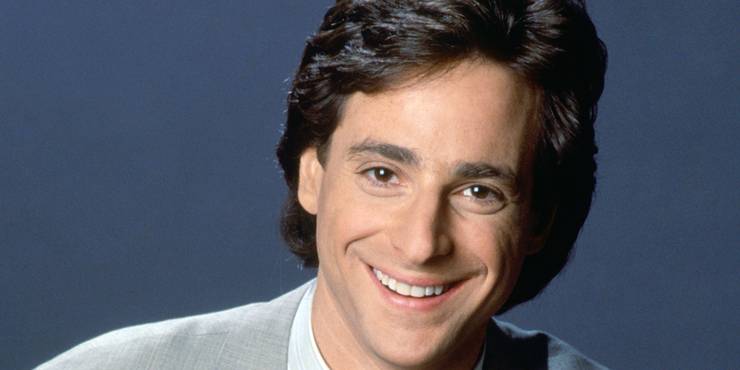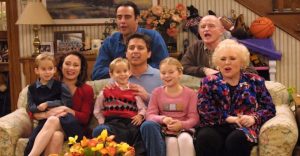Full House: 10 Things That Haven’t Aged Well

Airing from 1987 to 1995, Full House remains one of the most beloved sitcoms of all time, even over 30 years after it premiered. Chronicling the lives of the extended Tanner-Katsopolis-Gladstone family, and the crazy adventures they all get up to while living under one very, very crowded roof, the series is still beloved for its wholesome messaging and cheesy cutesy humor.
With the likes of John Stamos, Bob Saget, and the Olsen twins bolstering its cast, the series went on to be a hit in its original run, but has ostensibly become even a bigger hit in the years of reruns and streaming. But as a result of being over 30 years old now, the series is full of storylines that never would have made it to air today. We look at 10 of them.
10 DJ inadvertently getting married at 13

Jesse’s Greek background is one of the characteristics the show refers to most frequently for his character’s arc. But when it comes to representing Greek culture as a whole, the few times the show does so are steeped in pretty stereotypical, outdated traits.
Take, for example, the season four episode “Greek Week.” DJ quickly develops a mutual crush on visiting Greek boy, Sylvio, who asks DJ, all of 13 years old at the time, to go for a walk around the kitchen table with him. In this simplified, stereotypical scenario, DJ and Sylvio wind up married… as if that’s how Greek marriages actually happen, and as if that’s a healthy storyline to depict for a 13-year-old.
9 Dated gender dynamics

Being a product of the 1980s and 1990s sitcom world, it’s unsurprising that Full House doesn’t exactly have the best handle on complex gender relationships. But that doesn’t make it any less disappointing. Various times throughout the series, the fact that the men in relationships have to be the ones “in charge” through macho stereotypes is frequently discussed.
Additionally, there are two episodes in the series,”Just One of the Guys” and “Girls Will Be Boys,” that find both DJ and Michelle trying to act more like boys to be able to fit in. It’s disheartening, even if the ultimate messages mean well.
8 Underage drinking storylines

It’s no secret that teens face unbelievable amounts of pressure to grow up faster than they’re supposed to. It’s also no secret that Full House came about in the age of “Very Special Episodes,” so it’s a given that the series would tackle issues of peer pressure.
But the way the series does so is incredibly uncomfortable, after all these years. A late in the series episode finds Kimmy getting completely blackout drunk at a party and voicing her desire to drive herself home. And an early episode in the series’ run finds DJ, just in middle school at the time, accosted by boys at a party who want her to drink.
7 Walter, also known as Duckface

Going along with the message of the Very Special Episode, Full House takes on the subject of bullying multiple times throughout its eight season run. But one of the instances most poorly thought out and truly mean-spirited comes in the case of poor little Walter, who is dubbed Duckface due to the way he purses his lips after speaking.
It’s a truly hurtful episode, and it finds not only Stephanie engaging in bullying behavior, but also Jesse reflecting on being a bully during his own youth. No one comes out of the episode looking good, even if Walter winds up being integrated into Stephanie’s friendship group afterwards.
6 Portrayal of women as predatory

Sitcoms inevitably introduce characters who are romantically interested in the main characters, to the main characters’ horror, far more frequently than they don’t. But Full House had a real, pervasive problem with the characters it introduced to fill these roles.
Almost all of them were older women, who could easily be demeaned as cougars, who expressed aggressive, sexualized interest in the main male characters. Mrs. Carruthers sexually harassed Joey for seasons on end, and Jesse found himself on the end of more than a few wandering eyes and hands, including while filming the IQ Man commercial.
5 The treatment of Kimmy Gibbler

Kimmy Gibbler might not have been the most likable character in the series… or the sharpest tool in the shed. But there’s really no excuse for the way the show treated her character. Or for the way that the three grown men routinely bullied and embarrassed her whenever they could.
It’s one thing for Stephanie and Kimmy to be odds at each other; little sisters and big sisters’ best friends are a perfectly fairly matched duo. But to have three men in their 20s and 30s routinely make fun of a preteen and teenage girl is just mean-spirited, and definitely hasn’t aged well.
4 Child endangerment storylines

Sitcoms clearly exist in a heightened reality to the one we live in. But that still doesn’t make some of the storylines they take on any less offensive and dangerous. Take, for example, the purely ridiculous episode “Honey, I Broke The House.”
In this episode, Stephanie somehow gets behind the wheel of Joey’s car and backs her way through the Tanner family home’s kitchen window. Stephanie could have been truly hurt in this process, and even if the moral of the episode winds up being that she’s far more important and valuable than anything that could be fixed with money, it’s still a dangerous situation to depict on television.
3 Offensive depictions of mental illness

Full House seemingly delights in making fun of quirky or stereotypically nerdy characters. But in the case of Danny Tanner, the jokes made at his expense travel into entirely harmful territory, particularly when it comes to his obsession with cleanliness and order.
Danny is clearly exhibiting signs of Obsessive Compulsive Disorder (OCD) throughout the series, but his behavior is always used as a punchline, some of which are far more mean-spirited than others. Whether it involves him being called a neat freak or, in one cruel episode, “a psycho with a dust mop,” Danny is never given the care or concern he deserves in this regard.
2 Stavros Katsopolis

Seasons after the previously discussed “Greek Week” fiasco, Full House‘s stereotyping of Greeks continues to show its age. After the tragic death of the beloved Papouli, the series introduces Jesse’s cousin, Stavros, who seemingly embodies every possible stereotype imaginable.
Stavros is slimy, greasy, conniving, scheming, flirtatious, lazy, and thieving. John Stamos takes on the role in a dual performance, and from Stavros’s hooked nose to his lecherous laugh, it’s hard to imagine how this character even got off the drawing board.
1 DJ’s one episode eating disorder

Full House, as a sitcom aimed at children and families alike, had to take on plenty of important issues as the result of being conversation material for families. But the hazards of the “Very Special Episode” format include the fact that the storylines tackled in one isolated episode are never issues that could receive so little focus in real life.
Take, for example, DJ’s brief eating disorder. She stops eating, sustaining herself only on ice cubes, and nearly passes out while working out in the gym. But by the end of the episode, all is well and good again, and she’s comfortable with herself. Eating disorders are far more serious than this episode depicts them to be, and the reductionist treatment is honestly quite offensive.
About The Author

















